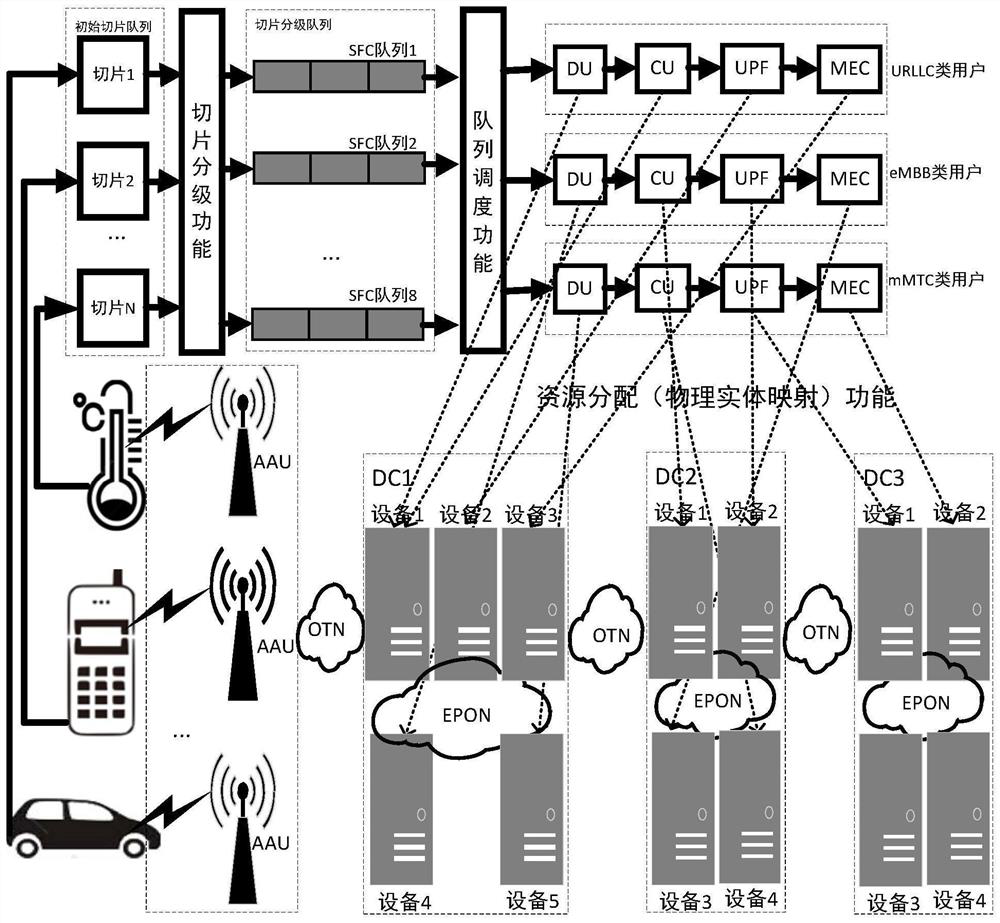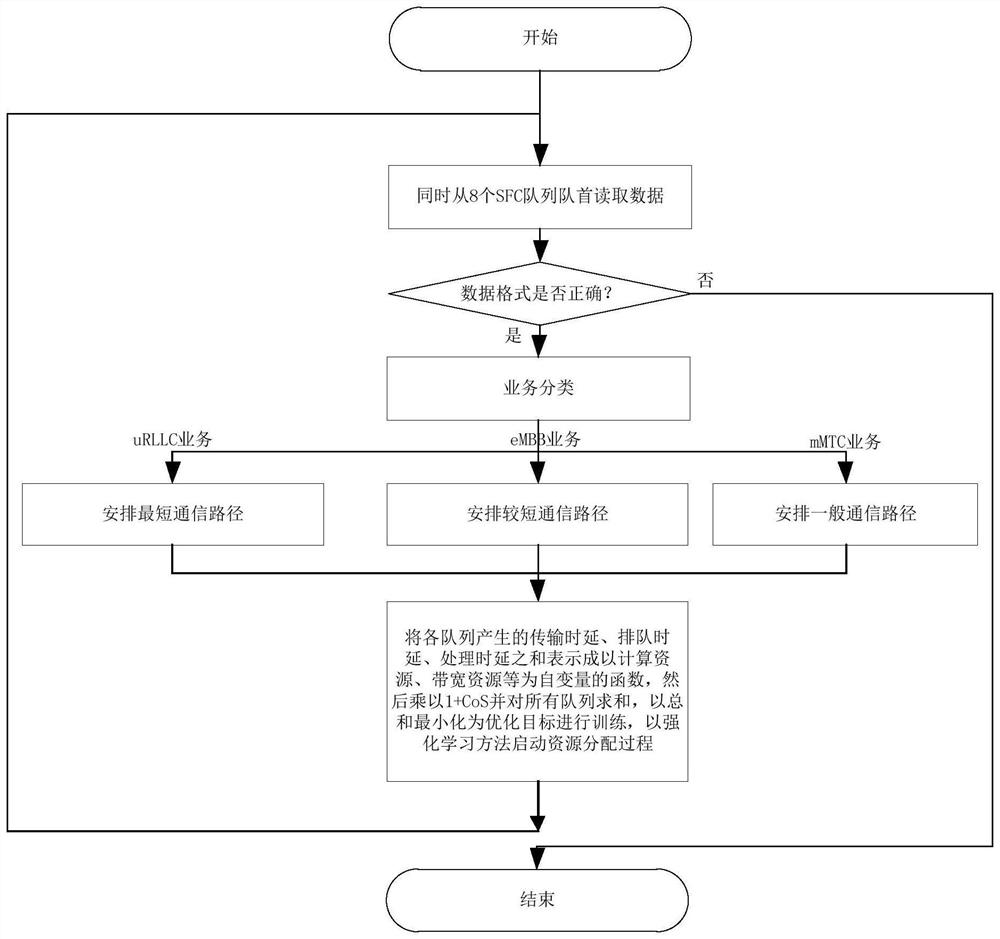5G network slice resource allocation method and system
A technology of resource allocation and network slicing, applied in the field of communication network, can solve the problem that the delay characteristic requirements of uRLLC services cannot be guaranteed, and achieve the effect of guaranteeing the delay characteristic requirements and reducing the delay
- Summary
- Abstract
- Description
- Claims
- Application Information
AI Technical Summary
Problems solved by technology
Method used
Image
Examples
Embodiment 1
[0054] Such as figure 1 As shown, a 5G network slice resource allocation method includes:
[0055] Step 1: Obtain the slicing request proposed by the user, arrange the obtained slicing requests in groups according to the CoS level, and obtain 8 SFC queues;
[0056] Step 2: Take slice requests from the heads of the 8 SFC queues each time, and configure communication paths for the fetched slice requests according to the service classification of uRLLC, eMBB, and mMTC;
[0057] Step 3: Use the pre-learned resource allocation method to allocate computing resources, storage resources, and bandwidth resources for the fetched slice request, obtain a slice resource allocation strategy that meets the delay requirements of each service, and use it as the resource allocation method for slice requests;
[0058] Step 4: Delete the slice request that has completed resource allocation from the SFC queue, place the newly acquired slice request at the end of the corresponding SFC queue accord...
Embodiment 2
[0094] In this embodiment, the SAC algorithm that automatically adjusts the temperature coefficient α is taken as an example to illustrate the reinforcement learning process for implementing resource allocation.
[0095] In order to speed up the algorithm convergence process, the SAC algorithm introduces strategy entropy (using Indicates that it is calculated by the opposite number of the action probability), and its training process is as follows Figure 4 shown, including:
[0096] Step 1: Initialize the neural network.
[0097] Step 1.1: Initialize the neural network parameters.
[0098] Neural network parameters include: 1 policy network π with parameter φ; 2 action-value network Q with parameters θ 1 , θ 2 . The purpose of setting up two Q networks is to select the smaller one of the Q values to avoid overestimation of the Q values. In order to reduce the data correlation, the two target networks corresponding to the two action-value networks Q are introduced, and...
Embodiment 3
[0119] This embodiment provides a 5G network slice resource allocation system, including:
[0120] Slicing grading module: used to fetch the slicing request proposed by the user, arrange the obtained slicing requests in groups according to the CoS level, and obtain 8 SFC queues;
[0121] Queue scheduling module: used to fetch slice requests from the queue leaders of the 8 SFC queues each time, and configure communication paths for fetched slice requests according to the service classification of uRLLC, eMBB, and mMTC;
[0122] Resource allocation module: It is used to allocate computing resources, storage resources, and bandwidth resources for the retrieved slice requests using the pre-learned resource allocation method, and obtain a slice resource allocation strategy that meets the delay requirements of each service, and use it as the resource allocation method for slice requests ;
[0123] Queue update module: It is used to delete the slice request that has completed resour...
PUM
 Login to View More
Login to View More Abstract
Description
Claims
Application Information
 Login to View More
Login to View More - R&D
- Intellectual Property
- Life Sciences
- Materials
- Tech Scout
- Unparalleled Data Quality
- Higher Quality Content
- 60% Fewer Hallucinations
Browse by: Latest US Patents, China's latest patents, Technical Efficacy Thesaurus, Application Domain, Technology Topic, Popular Technical Reports.
© 2025 PatSnap. All rights reserved.Legal|Privacy policy|Modern Slavery Act Transparency Statement|Sitemap|About US| Contact US: help@patsnap.com



